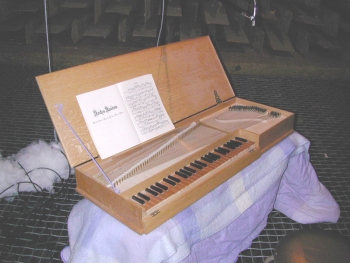


Modeling of the clavichord
One of the oldest musical instruments still in use, the clavichord has a beautiful but quiet sound. The sound production of the clavichord is based on a simple lever system, in which a metal plate called the tangent hits a pair of strings, when the player depresses a key on the keyboard. This principle is different from plucking of strings, as used in many of other string instruments such as the acoustic guitar, and also different from hammering the strings, another common way of exciting strings used for example in the piano. Nevertheless, we have created a computer synthesis method for clavichord tones using similar signal-processing techniques that we have used previously in the case of other string instruments. This shows that the waveguide string model and the principle of commuted synthesis are applicable to a wide range of stringed musical instruments.

The following table lists our clavichord-related research in inverse chronological order. For some publications, the PDF-file and a companion web-page containing sound examples are provided. These can be found in the leftmost column.
| |||||||||
esittely | introduction | contact info | teaching | research | publications | current news | demonstrations | software | links | feedback | intranet | finder
http://www.acoustics.hut.fi/research/
Last modified: Mon Jan 2 09:07:08 EET 2006
< Feedback
>

